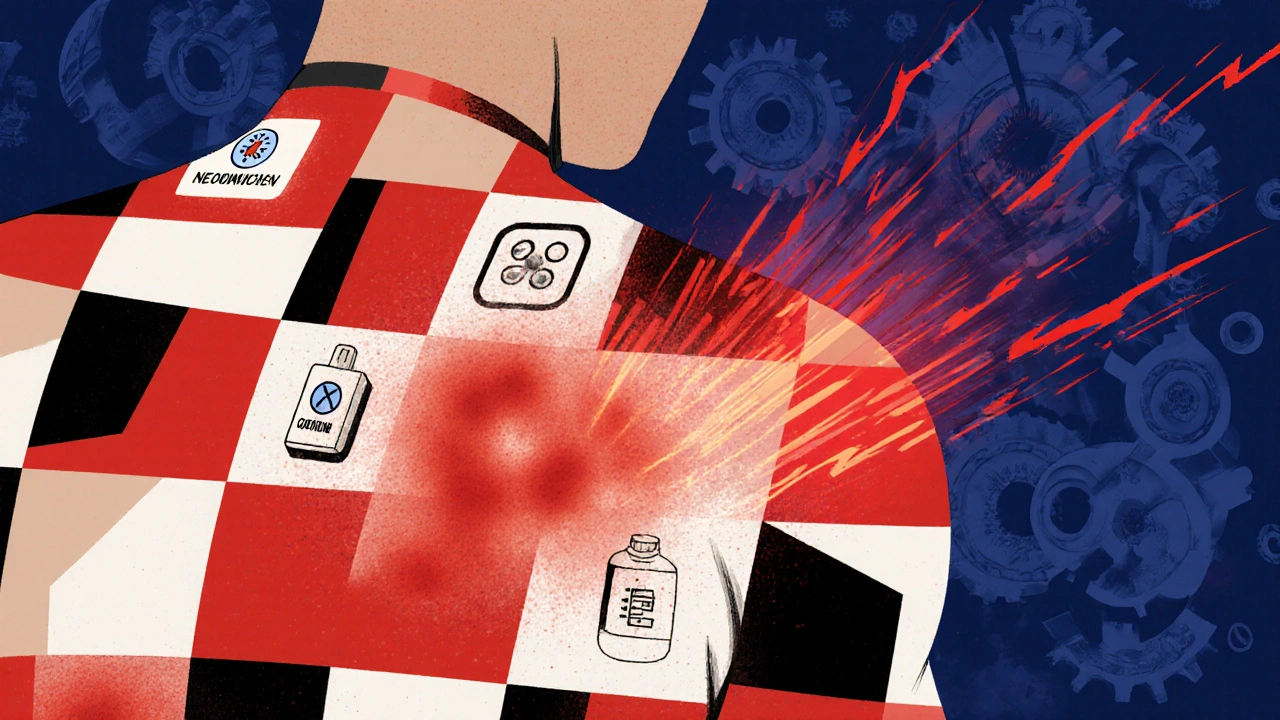Contact Dermatitis: Causes, Triggers, and How to Manage It
When your skin turns red, itches, or blisters after touching something harmless, it’s likely contact dermatitis, a common skin reaction triggered by direct contact with an irritant or allergen. Also known as allergic contact dermatitis or irritant dermatitis, it’s not contagious—but it can feel like it’s taking over your life. Unlike eczema that shows up out of nowhere, contact dermatitis has a clear trigger: something you touched. It could be your watch strap, hand soap, perfume, or even the metal in your jeans button.
Most cases fall into two types: irritant dermatitis, caused by repeated exposure to harsh chemicals like detergents or solvents, and allergic contact dermatitis, a delayed immune reaction to substances like nickel, poison ivy, or certain topical antibiotics. The difference matters because one can be avoided by washing your hands more, and the other needs patch testing to find the hidden culprit. Many people think they’re just "sensitive," but they’re reacting to something specific—something that can be identified and removed.
What’s tricky is that the reaction doesn’t always happen right away. You might use a new lotion for weeks before your skin finally flares up. Or you’ve worn the same jewelry for years, then one day—boom—your neck turns red. That’s the delayed response of allergic contact dermatitis. And while some people assume it’s just dry skin, the real sign is a clear border where the substance touched your skin. If you’ve ever had a rash that looked like a handprint from a glove, or a line along your ear from glasses, that’s contact dermatitis.
It’s also easy to miss the connection between your skin and your meds. Some topical creams, even those meant to help, can cause it. Antibiotics like neomycin, preservatives in ointments, or even fragrance in moisturizers can trigger it. And if you’re on long-term steroid creams, your skin can become so thin it reacts to almost anything. The same goes for people with chronic skin conditions like psoriasis or eczema—your skin barrier is already weak, so it’s more likely to react.
This collection dives into the real-world cases you won’t find in textbooks. You’ll see how people figured out their triggers—from a new laundry detergent to a hair dye they’d used for 15 years. You’ll learn how to test your own environment, what to ask your dermatologist, and how to avoid common mistakes like using "natural" products that still contain allergens. Some posts show how even over-the-counter remedies can make it worse, while others reveal how simple changes—like switching to fragrance-free soap—brought relief after years of frustration.
You won’t find fluff here. Just clear, practical info on what causes contact dermatitis, how to stop it, and how to keep it from coming back. Whether you’re dealing with a sudden rash or have been struggling for months, the answers are in these posts—and they start with knowing exactly what’s touching your skin.





